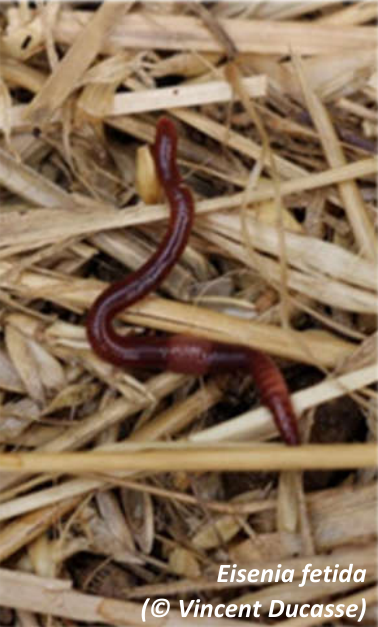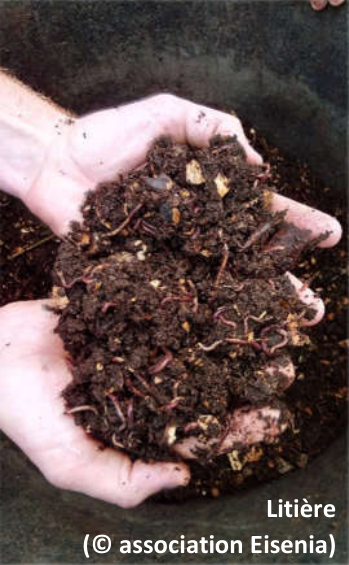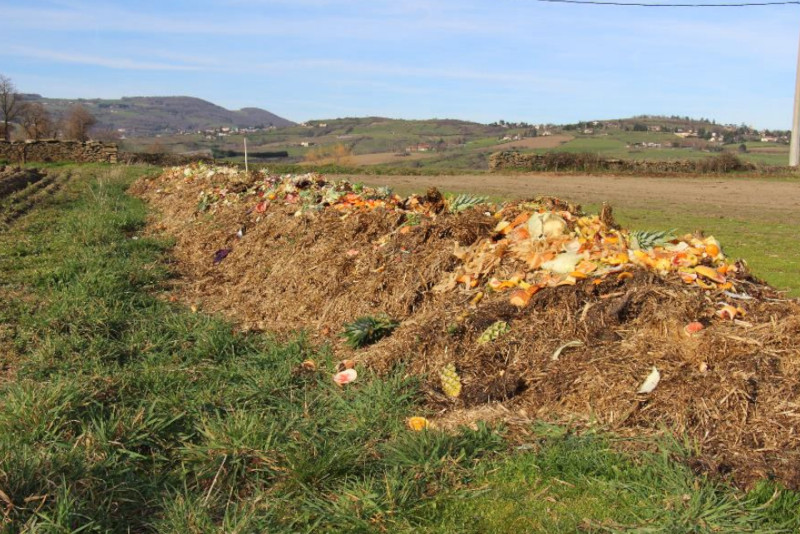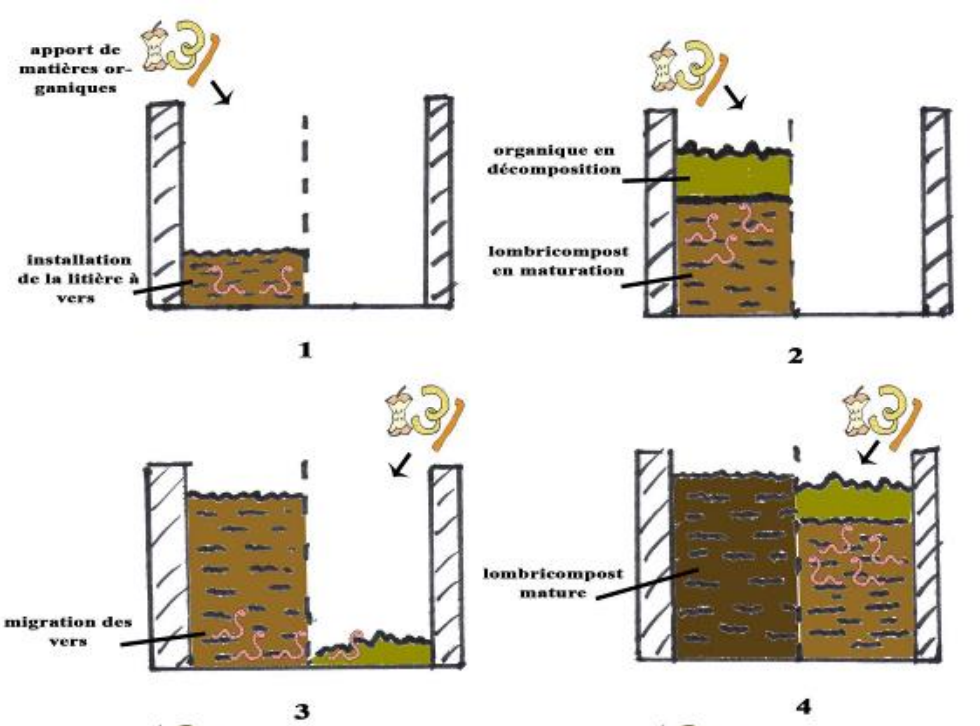In France, the so-called “anti-waste” law passed on February 10, 2020 aims to tackle waste management and encourage circular economy. In response to the widespread sorting of organic residues (households, professionals, administrations and local authorities), metropolitan areas have set up bio-waste collection platforms. However, the implementation of these systems, as well as the valorization by farmers of the products resulting from these transformations, raises a number of questions. Indeed, the quality of recycled products is sometimes questioned in terms of nutrient content and potential contaminants such as plastic.
The VALOR project aims to characterize and assess the feasibility of vermicomposting processes to recover urban biowaste from the Lyon metropolitan area and return it to farmers’ fields for agricultural use. To this end, the project has chosen to focus on different recovery methods: composting (on a platform or at the ground floor of building), methanization and vermicomposting (carried out by the Eisenia association in Lyon).

Funder: The French Agency for Ecological Transition
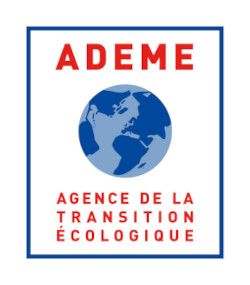
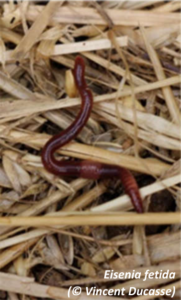

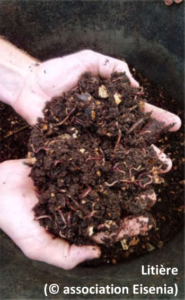
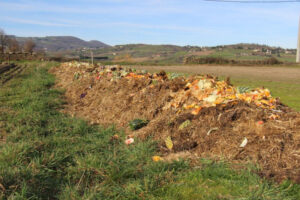
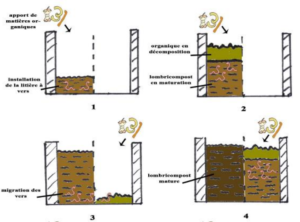
Material and methods
The project was organized around three main actions:
- Study of biowaste recycling in metropolitan areas
For this, the team rely on different methods:
- Surveys of bio-waste treatment stakeholders,
- Bibliography to better qualify these channels and find quantitative data on material flows,
- Modeling to assess GHG emissions for the various types of process studied, and
- Study trips to other cities, or even other countries (Spain), to understand and compare the different biowaste treatment methods, including vermicomposting.
- Experimental facilities in organic agriculture
An experimental field site was established in 2020 at Civrieux (North of Lyon) on a farm currently converting to organic farming. Treatments with vermicompost, compost and digestate from methanization, all derived from urban biowaste, were studied, and compared with a control with no organic input. Following the input of organic matter, soil fertility (chemical, physical and biological) and crop performance (yield, quality) were monitored.
- Vermicompost in Givors
The Eisenia association has set up collective vermicomposters in working with the Givors (south of Lyon) town council as part of an experiment in the town. This system is being studied in comparison with the one in Lyon, in order to assess the general applicability of this system and the barriers and levers.
One of the advantages of vermicomposting is that it can be carried out without the need for mechanization, and therefore without consuming energy. The process is ‘low tech’, applicable locally, on a small or large scale.
Key results
Regarding the physical and chemical characteristics studied, vermicomposts exhibit a certain homogeneity in terms of the parameters monitored (pH, temperature and humidity). On all units monitored, pH values varied between 7 and 8.3, temperature variations remain between -5°C and +5°C in comparison to the outside temperature, and humidity stayed between 63 and 66%. These results show that the conditions within vermicomposting unit are suitable for the survival, reproduction and activity of vermicompost worms. Soil biodiversity analyses showed significant faunal diversity and abundance.
Biowaste are defined by the article L. 541-1-1 of the French Environment Code as: “Non-hazardous biodegradable garden or park waste, food or kitchen waste from households, offices, restaurants, wholesalers, canteens, caterers or retail outlets, as well as similar waste from food processing plants”. Source: https://www.ecologie.gouv.fr/biodechets
Biowaste recovery methods:
- Composting is a process involving biological transformation of organic residues under aerobic conditions. On a large scale, this process is often carried out on industrial or semi-industrial platforms. Deposited on platforms, organic residues are degraded by the activity of scavengers, particularly microorganisms. During the process, the composted residues rise in temperature to ~70°C, enabling the removal of pathogenic organisms. Compost can then be used on farms as a soil amendment, thanks to its high organic carbon content. During the composting process, GHG emissions are significant.
- Methanization is based on the degradation of organic matter by micro-organisms, under controlled conditions (digesters) and in the absence of oxygen (anaerobic conditions). At the end of the process, methane (biogas) and digestate are produced. The use of digestate in agriculture is currently a topic of research regarding its quality and impact on soils.
- Vermicomposting is used in many parts of the world, this is a controlled organic matter (OM) degradation process based on the addition of manure worms to foster the decomposition stabilization of organic matter. The end product, known as vermicompost, has intermediate characteristics between compost and digestate, with a balanced C/N and exhibit diverse and active microorganism’s population.
Does vermicompost emit less GHG than composting?
Extract from Vincent Ducasse’s thesis (Ducasse 2023):
“Among the specific biowaste recovery techniques, composting is the one that potentially emits the most greenhouse gases (GHGs) due to temperature rise (Komakech et al., 2015). Komakech et al. (2015) showed with a life cycle analysis of a city’s biodegradable waste treatment systems that conventional (thermophilic) composting emitted 80.9 kg CO2 eq/tonne of waste versus 17.7 for vermicomposting, i.e. 78% less GHG. This is mainly due to the increasing temperature during the composting process, which produces a significant amount of GHGs, with also 25 to 36% more N2O and 22 to 26% more CH4 than vermicomposting (Nigussie et al., 2016). In addition, Nigussie et al. (2016) showed that by increasing earthworm density and moisture content during the process, it was possible to further reduce GHG emissions of vermicomposting. An increase in worm densities from 1 to 3 kg.m-² increases CO2 production by 3 to 14% but enables CH4 production to be reduced by 10 to 35%, while an increase in moisture from 75 to 85% enables CH4 to be reduced by 32% and N2O by 40%. Other studies have shown that vermicomposting reduces NH3, CH4 and N2O emissions by up to three times compared with composting (Lleo et al., 2013).”
Project team
Vincent Ducasse et Joséphine Peigné.
Partners
- Eisenia
- INRAE and the university of Avignon (UMR EMMAH)
- INSA and the University Jean Moulin Lyon 3 (UMR 5600 “Environment City and Socitety”)
Resources and publications
Ducasse, Vincent, Sainmont, Lucile et Ulrich, Pierre, 2022. Guide technique – Le vermicompostage de proximité. 23 juillet 2022. https://vermicompost.fr/wp-content/uploads/2023/07/Guide-VC-proximite-2023.pdf
Broyer, Lola, 2021. Caractérisation du processus de vermicompostage en milieu urbain. [en ligne]. septembre 2021. Disponible à l’adresse : https://vermicompost.fr/wp-content/uploads/2022/10/rapport_LB_ajouts_NP.pdf
Peigné, Joséphine, Grard Baptise, Ulrich, Pierre, Ducasse, Vincent, Berdier, Chantal, Maillefert, Muriel et Capowiez, Yvan. 2021. Rapport final du projet Valor. 2021.
Ducasse V, Capowiez Y, Peigné J (2022) Vermicomposting of municipal solid waste as a possible lever for the development of sustainable agriculture. A review. Agron Sustain Dev 42:89. https://doi.org/10.1007/s13593-022-00819-y
Ducasse V, Watteau F, Kowalewski I, et al (2023) The amending potential of vermicompost, compost and digestate from urban biowaste: Evaluation using biochemical, Rock-Eval® thermal analyses and transmission electronic microscopy. Bioresource Technology Reports 22:101405. https://doi.org/10.1016/j.biteb.2023.101405
Thèse – Vincent Ducasse « Valorisation des biodéchets urbains par vermicompostage sur des sols de grandes cultures conduits en AB : une pratique agroécologique pour préserver la biodiversité des sols ? » https://theses.fr/2023AGPT0005
